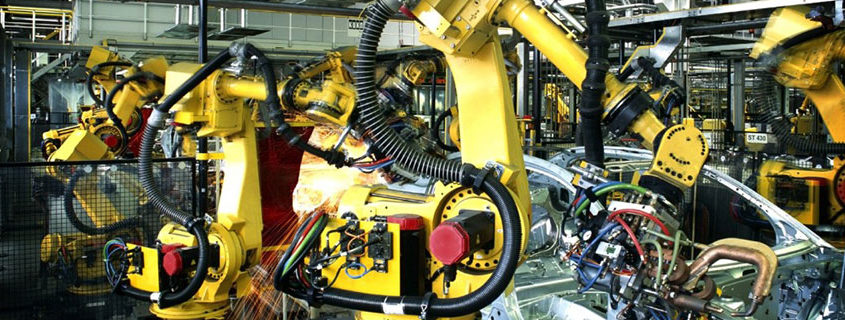Overall Equipment Effectiveness (OEE)
Increase productivity by increasing efficiency
What is OEE – Overall Equipment Effectiveness?
The Overall Equipment Effectiveness (OEE) metric is now table stakes in the business of manufacturing.
OEE is calculated with the formula (Availability)*(Performance)*(Quality). OEE breaks the performance of a manufacturing unit into three separate but measurable components: Availability, Performance and Quality. Each component points to an aspect of the process that can be targeted for improvement.
OEE may be applied to any individual Work Center, or rolled up to Department or Plant levels. This tool also allows for drilling down for very specific analysis, such as a particular Part Number, Shift, or any of several other parameters. It is unlikely that any manufacturing process can run at 100% OEE. Many manufacturers benchmark their industry to set a challenging target; 85% is not uncommon.
OEE = Availability x Quality x Performance.
An example: (Availability= 86.6%)*(Performance=93%)*(Quality=91.3%) = (OEE=73.6%)
The ability to demonstrate OEE as well as a process to constantly improve plant capacity through increased efficiency is the basis of coveted trusted-supplier relationships, and the next evolution in supply chain management.
Replace clipboard and Excel spreadsheets with real-time automated OEE
Over half of MEMEX’s new customers are looking for OEE, or a more accurate, automated way to track OEE. For manufacturing companies that have OEE today, over 90% say it’s done through recording measurements on a clipboard, then inputting those results into Excel, then reporting those results on a daily, weekly, or monthly basis.
But most plant managers realize this manual process, which can run through several hands, is prone to inaccuracies that cause OEE to be misstated by 50% or more and worse, the data is neither timely or actionable.
Prior to installing MERLIN Tempus, there are many factory floor teams admit that while they were running their plants 24×7, they could only produce data on 20 out of 24 hours with the clipboard-and-spreadsheet method. In another example, a single operator was responsible for several machines. When he encountered a non-functioning machine, he would mark downtime for the 5 minutes it took him to assess and fix the situation, but his clipboard reporting didn’t account for the 15 minutes the machine was down before he arrived, nor for the loss of production on the other machines under his supervision, which went unnoticed.
With MERLIN Tempus installed throughout the plant, the full 20 minutes of actual downtime is accurately recorded in real-time, multiplied by the number of similar incidents on other machines.
Features of OEE include:
- Real-time production visibility for everyone in the plant
- Including alerts through email or text
- Production data collection and reporting
- Downtime and reject cause analysis
- Labor productivity tracking
- Usage-based preventative maintenance
- Visual production scheduling
- Connection production floor to ERP
- Assess operator productivity
- Hardware, firmware and software all connected to the machine
- Software for plant wide metrics
- Handhelds, scanners, bar codes, marquees, light trees, devices etc.
- Real-time connection to machines
- Over 400 data elements collected
- Comprehensive reporting in 8 ways
- Reports, web, email alerts, real-time dashboard, cycle charts, KPI’s, down/reject, schedule)
In addition to enabling increased productivity, it is:
- Cost effective
- Practical and proven
- Expandable
- Plant-wide, enterprise enabled
- Compatible with all machines – CNC, non-CNC, PLC, presses, injection molding etc.
- An accurate key performance indicator with OEE metric
Benefits of OEE include:
- Able to identify problems fast
- Eliminate the non-productive labor and errors of manual data collection
- Present and format data your way – custom reports and exporting data
- Determine real job standards to help improve your job costing process
- Analyze causes for Downtime and Rejects — then eliminate them
- Real time knowledge of what is happening on the shop floor
- Usage-based preventative maintenance minimizes job interruptions
- Visual, “drag and drop” production scheduling
- Respond quickly to changing shop floor conditions
- Paperless strip chart shows detailed machine operating history
- Chart machine rate, cycle time and process variables
- Record and analyze real-time and historical performance/productivity/OEE
- Graphically display manufacturing productivity with OEE
- Use e-mail notification to alert appropriate personnel to potential or actual problems
- Monitor production schedule remotely in multiple locations with Web Job Queue
- View individual machine status of every job on every machine in every plant – in real-time – on your web browser
- Real-time process variable monitoring prevents problems from occurring
- Analyze operator and maintenance performance
- Record production totals, rejects, run time, downtime and calculated efficiencies by operator ID
- Smart Equipment = Smart Factories = Profitability
Next Steps
Book an Appointment
Talk to a MEMEX representative
Attend a Webinar
Watch a live MERLIN demo
How to Buy
Find a dealer or buy direct

